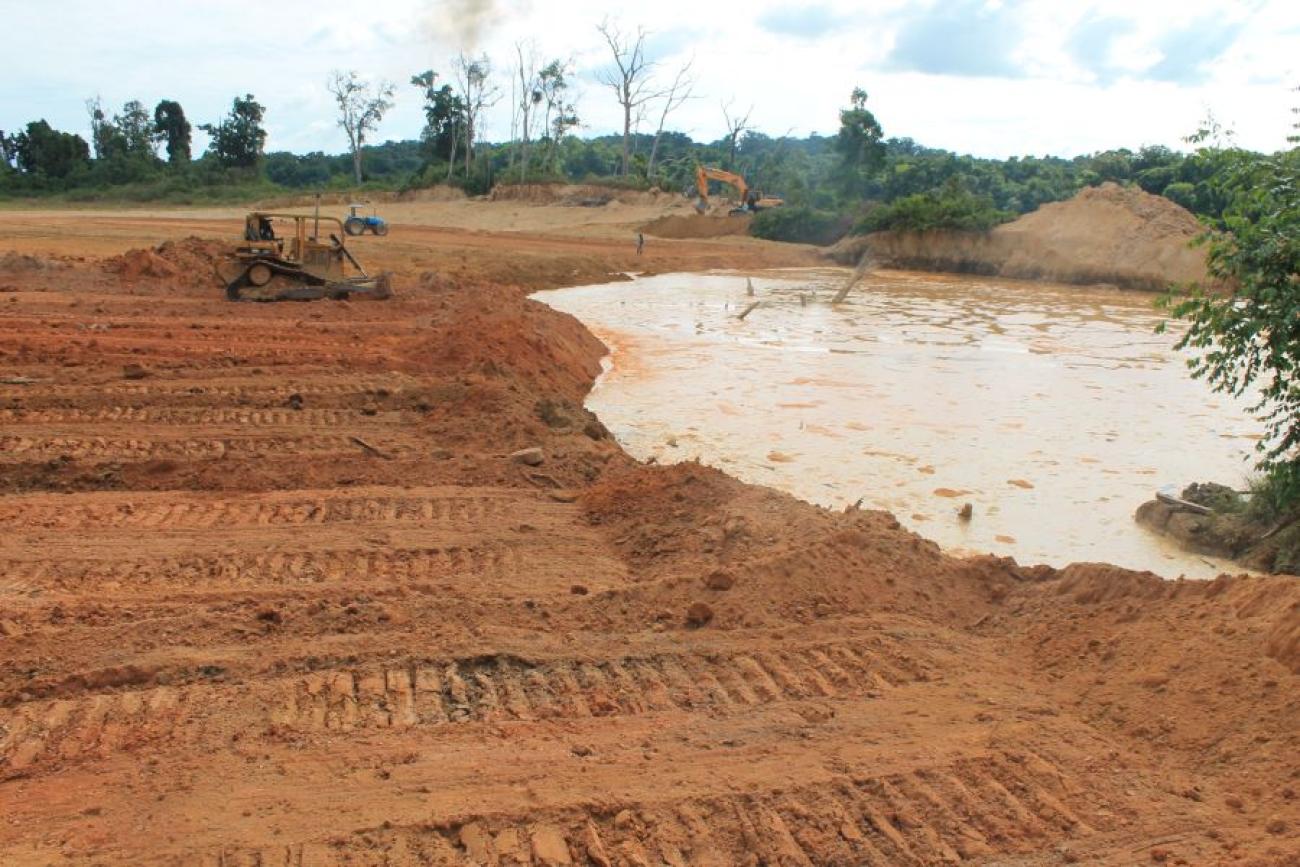UNCCD 2021 focuses on land restoration as a means that can bring economic resilience, create jobs, raise income, increase food security and lessen the impact of climate change.
The UNCCD also promotes land restoration as a cost-effective approach to start a green economic recovery post COVID-19. This idea encourages careful consideration for sustainable management and use of land to rebuild from the pandemic. The UNCCD identifies land use change as a driver for emerging infectious diseases, and notes that the rate of land conversion is accelerating.
Adopted on June 17, 1994 in Paris and entered into force on December 26, 1996, the UNCCD is a globally recognized legally binding agreement to address land degradation, focused on people. Some 195 countries including Guyana are committed to the UNCCD. Guyana ratified the Convention on June 26, 1997, and joined the global community on September 24, 1997 in recognizing desertification/degradation as a major economic, social and environmental problem.
The Guyana Lands and Surveys Commission (GLSC) – National Focal Point Agency
The Guyana Lands and Surveys Commission (GLSC) is the National Focal Point Agency to the UNCCD, and has led various actions and initiatives enabling Guyana to combine international obligations with national development agenda and sectoral planning. While this allows the country to meet global commitments, it provides a national response to economic, social and environmental effects of degradation on land use, livelihood and human development.
According to Guyana’s National Land Degradation Neutrality (LDN) Target Setting Programme Report (2017-2030), land degradation in Guyana is caused by natural resource utilization and natural disasters in sporadic areas. It also recognizes that the country’s coastline is prone to erosion, along with saltwater intrusion and flooding, and losses of arable land due to floods and droughts. Further, it is acknowledged that human activities which result in pollution, removal of mangroves, urbanization and sea-level rise associated with climate change have all contributed in some way to coastal degradation.
Against this background, Guyana’s National Action Plan (NAP), originally prepared in 2006, led by the GLSC, guides implementation of local actions against desertification/land degradation and to promote sustainable land management. The Aligned NAP aims to ensure agricultural, pasture, mining, forest, coastal and other land uses and resources are managed as sustainable, productive systems that maintain ecosystem productivity and ecological functions while contributing directly to environmental protection, economic growth and social livelihoods.
The Aligned NAP seeks to improve institutional capacity and collaboration between state agencies especially those administering land and natural resources use; training in remote sensing, Geographic Information System (GIS) and information management systems/information technology among others; mainstreaming Desertification, Land Degradation and Drought (DLDD) into relevant national policies, strategies and plans; and finalization of National Land Policy. Additional targets include mainstreaming Sustainable Land Management (SLM) within educational establishments and enhancing knowledge and capacity of miners/land users to perform ecologically appropriate land restoration.
Drought preparedness and restoration
The NAP is one of two main UNCCD obligations. The other requires periodic UNCCD reporting, an activity also guided by the GLSC. Guyana has to date prepared eight (8) national UNCCD reports – in 2000, 2002, 2006, 2009, 2010, 2012, 2014 and 2018.
Additionally, Guyana developed a National Drought Mitigation and Adaptation Plan that caters for proactive, coordinated and effective planning, preparedness, mitigation, adaptation and recovery activities in response to drought risks and impacts. This included development of a Drought Early Warning System Protocol for Guyana.
Further, Guyana implemented the LDN Target Setting Programme and voluntarily set targets and measures focused on avoidance rehabilitation, restoration and sustainable land management and use. Areas of attention include enabling sustainable agriculture, preservation of biodiversity through expansion of protected areas; improved management of irrigation, drainage and flooding; coastal protection through mangrove restoration and rehabilitation of degraded area.
SLDM Project and support for UNCCD
Meanwhile, as the national executing agency and a main beneficiary of Guyana’s Sustainable Land Development and Management (SLDM) Project, GLSC and the country is being supported to meet UNCCD commitments. This is being done through a series of investments and activities to improve GLSC’s functions by building its technical and institutional capacity. The Food and Agriculture Organization of the United Nations (FAO) is the implementing agency for the SLDM project working in close collaboration with the GLSC.
A key state institution, GLSC’s functions include responsibility for advising government on land policies, management of state lands, issuance of land titles and leases, provision of support for land use development, collection of land rents and land management related fees. The SLDM project, as a comprehensive initiative aimed at supporting Guyana in developing a coordinated and cohesive system for sustainable land management and development, includes activities that would enhance GLSC’s functions in areas of land administration, surveying, mapping, business processes, monitoring and assessment and restoration of degraded lands, GIS among others.




